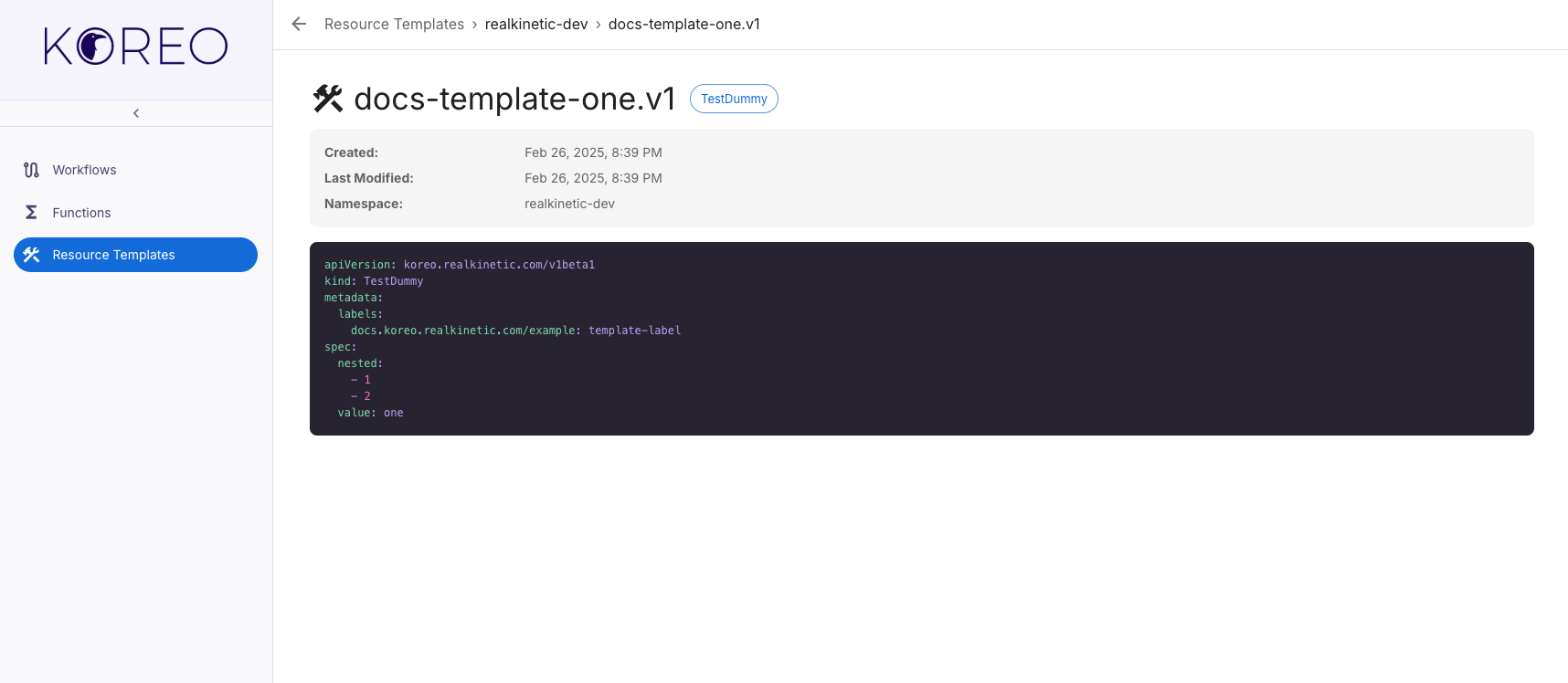Koreo UI
Koreo UI is a lightweight, read-only application that provides a visual representation of your Koreo Workflows and other resources. This can be useful for visualizing complex Workflows in order to understand interactions as well as visualizing specific Workflow instances and their respective managed resources. It also provides a way to view ResourceTemplates.
Installing
The recommended way to install Koreo UI is with the Koreo Helm chart. By default, Koreo UI is enabled as part of the Koreo controller installation. Refer to the Controller Installation documentation for steps to install.
By default, Koreo UI is installed and exposed with a Service. You can connect to it using the following:
kubectl port-forward svc/koreo-controller-ui 8080:8080
Viewing Workflows
The home page of Koreo UI displays a list of Workflows by namespace. This list can be filtered by Name, Namespace, Parent API Group, Parent Kind, Parent Version, Steps, and Instances.
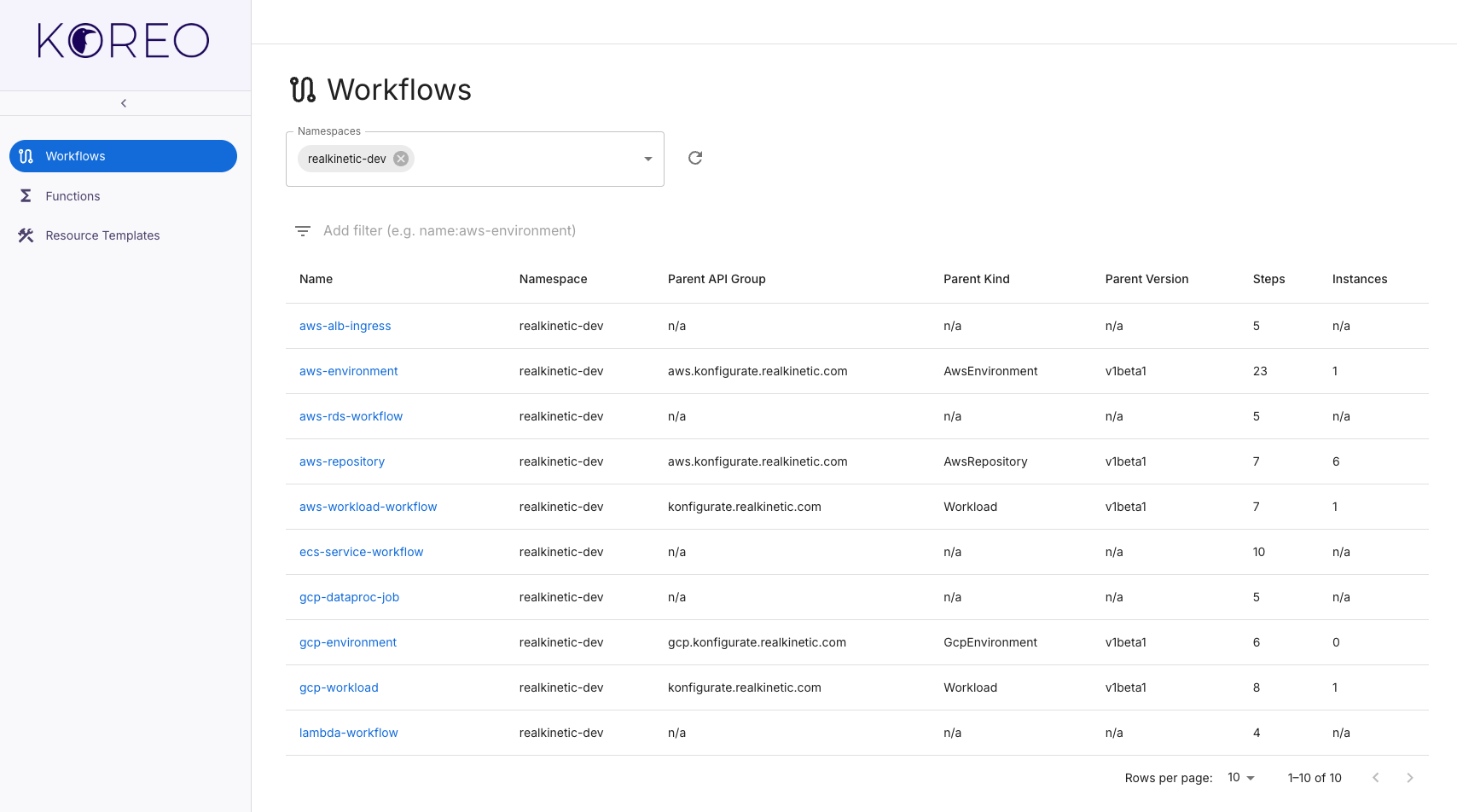
"Parent" in this case refers to the Kubernetes Resource Model (KRM) that
triggers the Workflow. n/a indicates the Workflow does not have a parent
specified, meaning it is used as a sub-Workflow instead.
"Steps" refers to the number of steps the Workflow contains.
"Instances" refers to the number of instances of the Workflow, i.e. the number of parent resources which exist that trigger the Workflow.
Workflows with instances can be expanded by clicking on them in the list. This will display a nested table containing information about each instance, such as the parent resource's status, when it was created, the resource generation, the number of resources it manages, and the YAML definition for the instance.
Viewing a Workflow Graph
Clicking into a Workflow will show a visual graph representation of it. This shows the dependencies between steps in the Workflow. Toggling the "Expanded" checkbox will expand aggregate nodes like Sub-Workflows and RefSwitches which are comprised of multiple nested nodes.
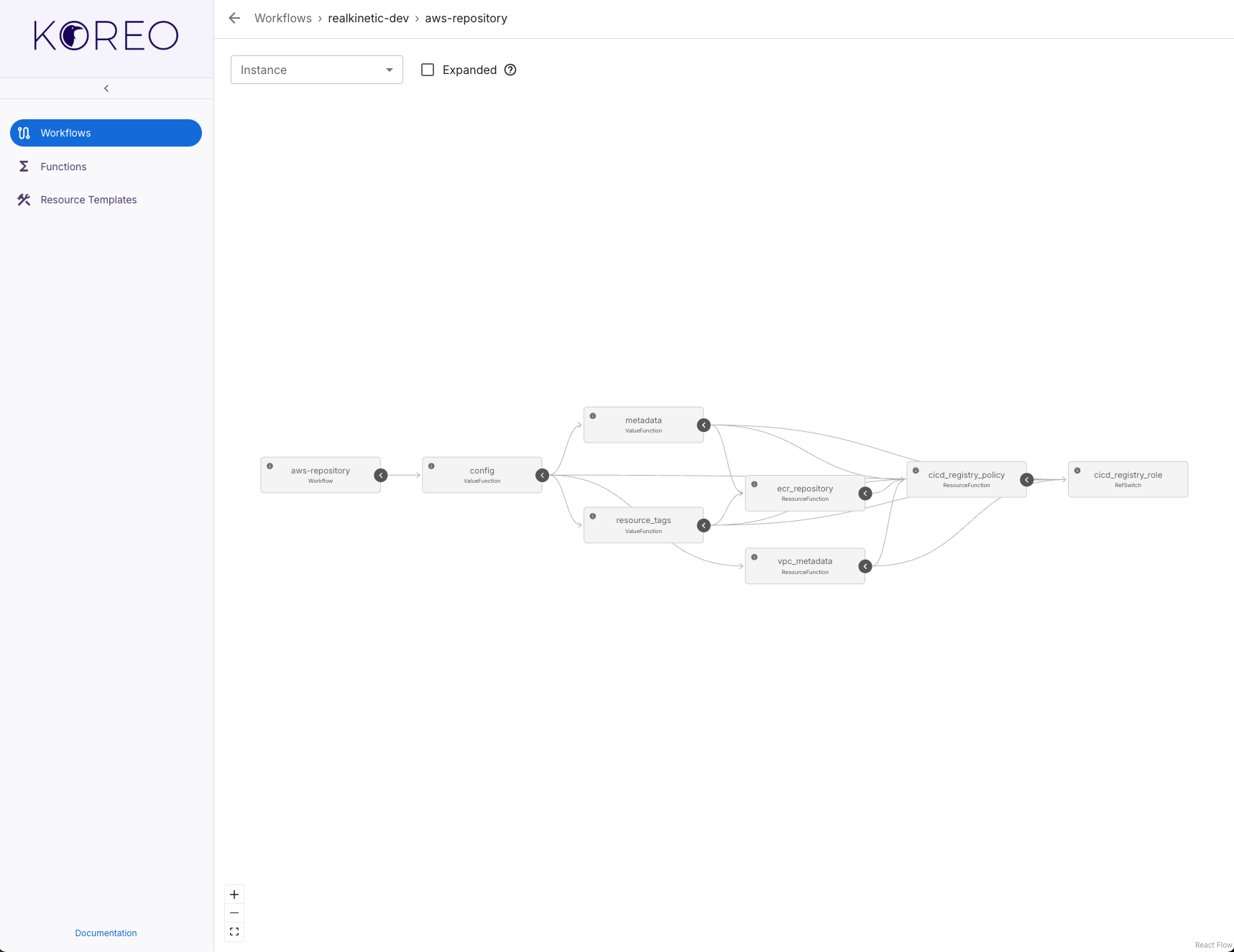
A specific instance of a Workflow can be viewed by selecting the instance from the dropdown. The instance graph will include nodes for managed resources, shown in purple, with dashed edges connecting back to the Workflow steps that manage them. Resources that are only read are shown with a white background and purple border.
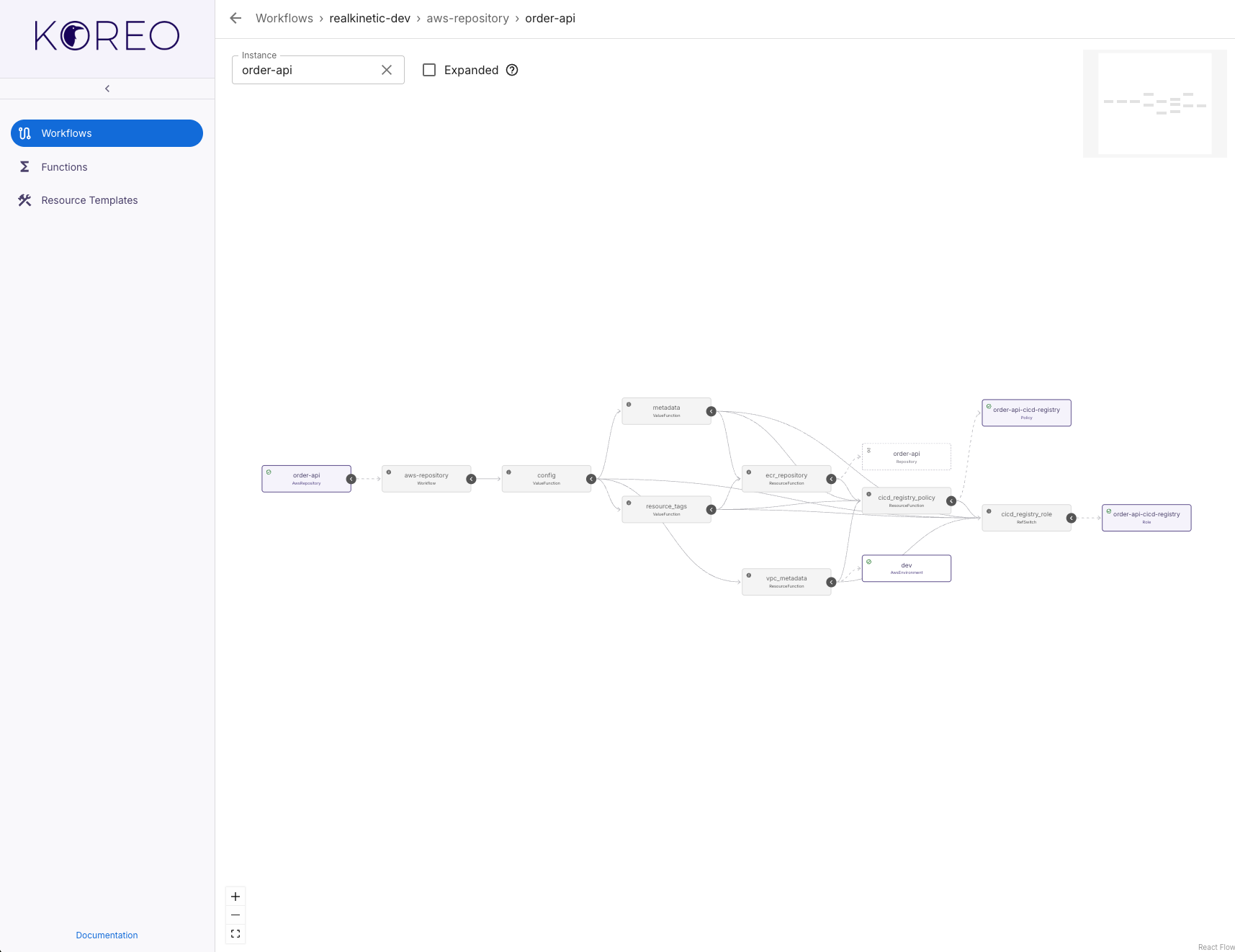
Viewing Functions
The Functions page shows a list of ValueFunctions and ResourceFunctions by namespace. This list can be filtered by Name, Namespace, and Kind.
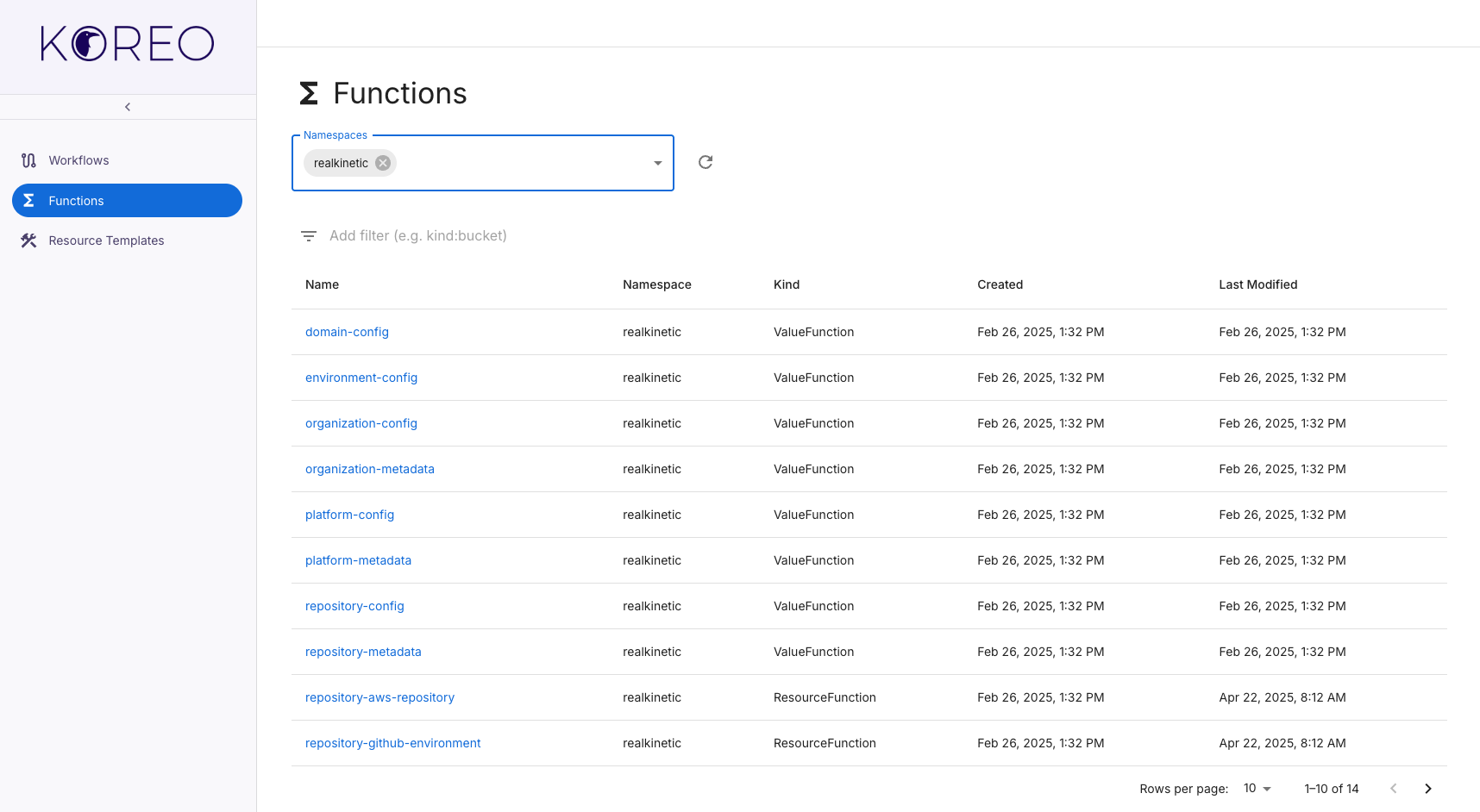
Clicking into a Function will show the metadata for it as well as the Function
spec.

Viewing ResourceTemplates
The Resource Templates page shows a list of ResourceTemplates by namespace. This list can be filtered by Name, Namespace, API Version, and Kind.
API Version and Kind refer to the KRM for which the ResourceTemplate corresponds to.
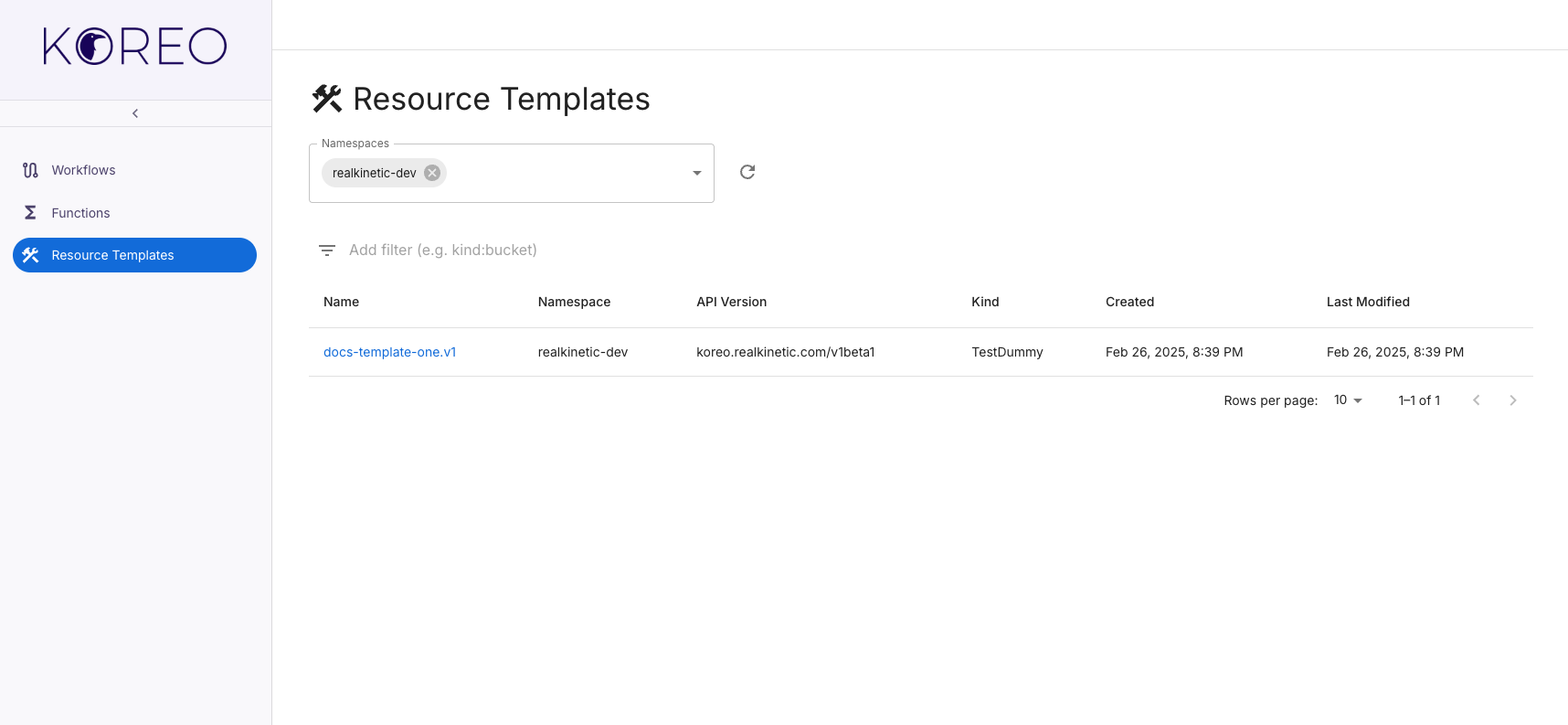
Clicking into a ResourceTemplate will show the metadata for it as well as the
template YAML definition.
